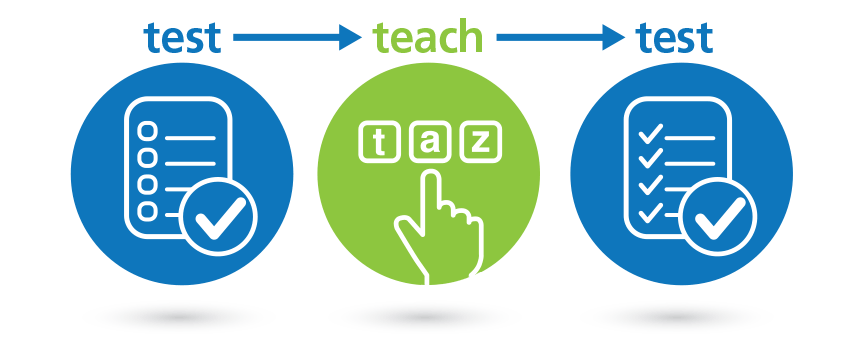[vc_row][vc_column][vc_column_text]
The Predictive Power of Dynamic Assessment
[/vc_column_text][/vc_column][/vc_row][vc_row][vc_column][vc_column_text]
An introduction to dynamic assessment
The Predictive Early Assessment of Reading and Language (PEARL) screener employs an innovative assessment approach referred to as dynamic assessment. Through dynamic assessment, the PEARL measures the construct of modifiability (the ability to learn something new) in the domains of decoding and literate (academic) language production and comprehension.
In a single testing session (often under 10 minutes), examiners assess gains from pretest to posttest as well as the student’s response to quality teaching. The effects of teaching on a student’s decoding and language can be observed and measured, and the results reveal how easy or difficult it will likely be for a student to learn those skills.
As a result, an estimation of a student’s need for intervention can be made quickly, without needing to monitor response to teaching over months or years. Dynamic assessment has shown promise for excellent prediction. When early identification is possible, earlier intervention and prevention are also possible.
What is particularly unique about the PEARL is that through the dynamic assessment process, actual measures of decoding and comprehension of literate language can be measured well before a student learns how to read. The PEARL was carefully designed so that its content reflects skills that students will need to master in school.
[/vc_column_text][/vc_column][/vc_row][vc_row][vc_column][vc_column_text]
[/vc_column_text][/vc_column][/vc_row][vc_section][vc_row][vc_column][vc_column_text]
Dynamic Assessment of Decoding subtest
The PEARL dynamic assessment of decoding subtest includes nonsense words that rhyme, allowing for both a phonological analysis and analogic decoding strategy. Nonsense words have been shown to be less culturally and linguistically biased and can be appropriate to use with culturally and linguistically diverse students. In a single test-teach-test session, examiners assess gains from pretest to posttest as well as the student’s response to quality teaching. The effects of teaching on a student’s decoding can be observed and measured, and the results reveal how easy or difficult it will likely be for a student to learn those skills. When early identification is possible, earlier intervention and prevention are also possible.
Dynamic Assessment of Language subtest
The Dynamic Assessment of Language features narrative retell tasks that reflect language production and comprehension. Students’ narratives tend to follow a developmental pattern, with complexity increasing as students mature. Narratives across many cultures tend to follow a predictable pattern of organization. Narrative organization is comprised of elements often referred to as story grammar (i.e., story structure). Story grammar can be evaluated based on how clear and complete it is. Story grammar elements are combined to form episodes (plots). The key story grammar elements of a minimally complete episode include a problem, an attempt to solve the problem, and a consequence.[/vc_column_text][/vc_column][/vc_row][/vc_section][vc_row][vc_column][vc_column_text]
[/vc_column_text][/vc_column][/vc_row]

